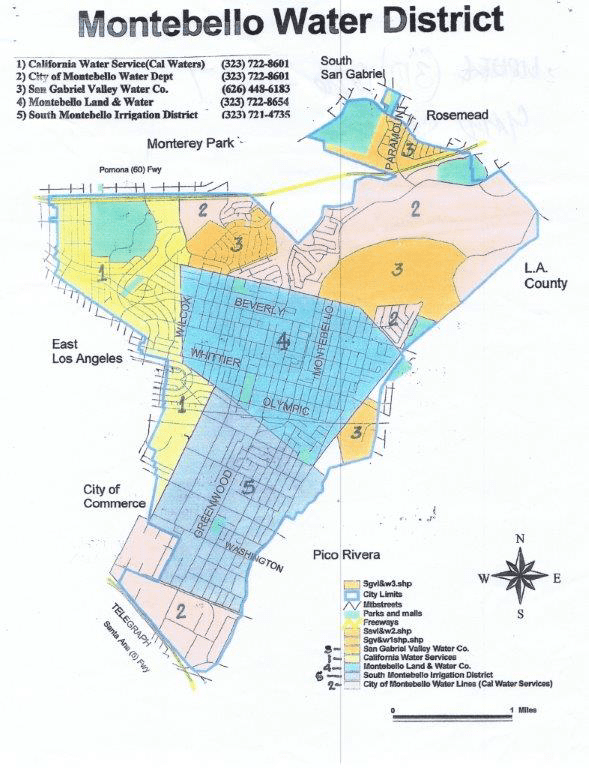Water A Public Resource: How Privatization Happens Pt. 2
Sometimes community health itself can be used as an excuse to pursue corporate dollars...
When it comes to public health, one easily believes that community wellness takes priority over anything else. However, as we have covered in previous publications, that does not always hold true. As more officials in the public sector are being forced into transparency from ongoing scrutiny, we continue to see motivations behind their actions as self-serving. What happens when exploitation of public utilities is labeled as the “best interest” for the city? The City of Montebello is still attempting to answer that question.
“City of Montebello Water System Goes Private by Denying the Voice of the Electorate”

[Montebello Water District Map, City of Montebello; all rights reserved]
Currently, the City of Montebello owns a small water system, serving about 8% of its water customers. This City-owned system is just one of five water purveyors serving city residents. Of the other four water purveyors, South Montebello Irrigation District is a public agency, while California Water Service, Montebello Land and Water Company, and San Gabriel Valley Water Company are all privately owned.
The City-owned system is primarily made up of old concrete pipes made with asbestos, a once-common part of water and drainage systems. This system has not been properly maintained, and is now in need of $50 million worth of health and safety repairs and improvements. Why has this been allowed to occur you may ask? Concerned residents express disdain with their belief that City officials did not do enough in the interim. They reportedly feel another agenda had been going on.
Yvonne Martinez Watson, Chair of the Environmental Justice Committee of the Sierra Club Angeles Chapter, and resident of the City of Montebello, says it comes down to competing interests, where one ultimately takes priority over the other.
Due to its small capacity, liability issues, and high repair costs, City officials deemed it in the best interest of the people to “pass the buck,” sell the system, and have a private entity take on responsibility for repairing the system and remediating water quality.
According to the Whittier Daily News (“Bidding war over sale of Montebello water system to be resolved today,” by Mike Sprague, March 8, 2016, updated August 29, 2017), the City had placed a bid proposal for interested entities to purchase the water system. Shortly after, the city manager was reported as having contacted the San Gabriel Valley Water Company because they had been outbid by the California Water Service. This was not revealed to California Water Service, nor to Montebello residents, until the transaction was featured in the aforementioned newspaper.
Under state law, voter approval was required for such a sale to take place, but in June 2016, Montebello voters rejected a ballot proposal to sell the water system.
Two years later, a bill was introduced into the State Assembly to circumvent the requirement for such voter approval. Assembly Bill 2339 (Gipson) provided an exemption for the Southern California cities of Montebello and El Monte and the Northern California City of Willow. The bill passed.
Now, the Montebello water system is currently in the process of being sold to San Gabriel Valley Water pending final approval by the California Public Utilities Commission, which is expected to happen by the end of 2020.
Selling off publicly-owned water systems to private companies may be a quick fix solution to addressing the expensive costs of defrayed maintenance, but at what cost to public health?
Blog Category:




Add new comment